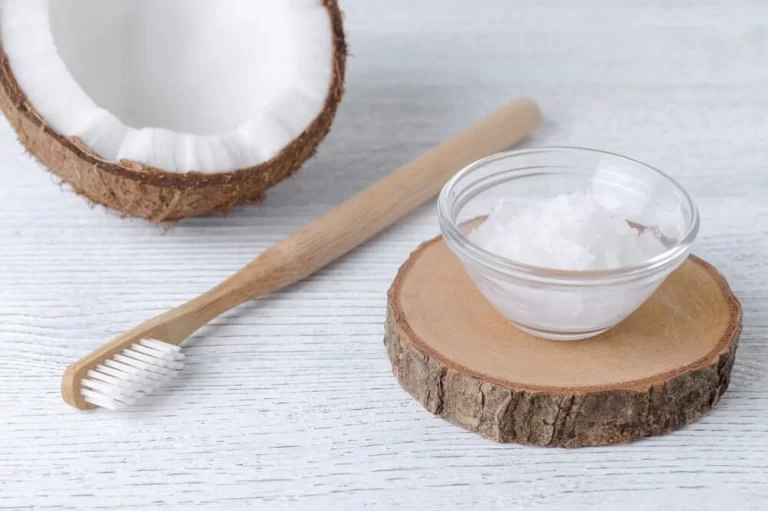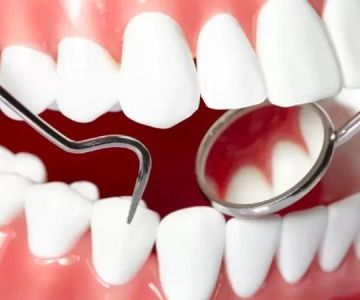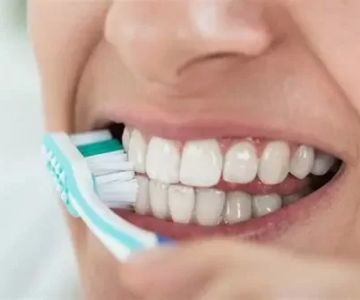
How to Use Coconut Oil for Oral Hygiene Effectively
In recent years, coconut oil has emerged as one of the most talked-about natural remedies for oral health. From ancient Ayurvedic traditions to modern wellness routines, people around the world have embraced coconut oil as a gentle yet effective way to cleanse the mouth, fight bacteria, and support gum health. But what does the science say, and how exactly should you use it? This article explores the best ways to use coconut oil for oral hygiene—combining traditional wisdom with modern dental insight from professionals at Family Dentistry Online.
The Science Behind Coconut Oil and Oral Health
Coconut oil contains high amounts of lauric acid, a natural antimicrobial agent that helps reduce harmful bacteria in the mouth. These bacteria—especially Streptococcus mutans—are known to cause plaque buildup, gum inflammation, and tooth decay. When used properly, coconut oil can reduce the bacterial load and create a cleaner oral environment without the harsh chemicals found in many mouthwashes.
Moreover, the gentle texture of coconut oil makes it suitable for sensitive mouths. It helps balance the mouth’s pH and supports the healing of minor gum irritations, making it an excellent complement to daily brushing and flossing.
What Is Oil Pulling and How Does It Work?
The practice most associated with using coconut oil for oral hygiene is called oil pulling. Originating from Ayurvedic medicine in India, oil pulling involves swishing oil in the mouth for several minutes to “pull out” toxins and bacteria. While traditional practitioners used sesame or sunflower oil, coconut oil has gained popularity for its pleasant taste and additional health benefits.
1. The Mechanism of Oil Pulling
When you swish coconut oil around your mouth, it binds to bacteria and food particles on teeth and gums. Because many microorganisms in the mouth have fatty membranes, they adhere easily to the fat molecules in the oil. By spitting out the oil after swishing, you effectively remove these bacteria from your mouth, reducing the risk of plaque formation and bad breath.
2. Modern Research Insights
Recent studies suggest that daily oil pulling can significantly decrease plaque levels and reduce gingivitis symptoms. In fact, some researchers have found that coconut oil is almost as effective as chlorhexidine (a common mouthwash ingredient) in reducing oral bacteria—but without side effects such as staining or taste alteration.
Step-by-Step Guide: How to Use Coconut Oil for Oral Hygiene
Using coconut oil for oral care is simple, but consistency and technique matter. Follow these steps for best results:
1. Choose the Right Oil
Always use organic, cold-pressed, virgin coconut oil. It contains no additives and retains its natural antimicrobial compounds. Avoid refined or flavored versions, which may contain synthetic ingredients that can irritate the mouth.
2. Measure the Amount
Take about one tablespoon of coconut oil. If you’re new to oil pulling, start with a teaspoon and gradually increase as you get used to the sensation.
3. Swish Gently
Swish the oil around your mouth for 10–20 minutes. Move it between your teeth and gums, but don’t gargle or swallow it. The goal is to let the oil come in contact with as many surfaces as possible.
4. Spit and Rinse
After swishing, spit the oil into a trash bin—not the sink, as it can clog pipes. Rinse your mouth thoroughly with warm water, then brush your teeth as usual. Many users notice smoother teeth and fresher breath immediately after the first few uses.
5. Repeat Daily
For best results, practice oil pulling daily, ideally in the morning before eating or drinking anything. Regular use helps maintain a cleaner mouth and supports gum resilience.
Other Ways to Use Coconut Oil for Oral Hygiene
Beyond oil pulling, coconut oil can be incorporated into your dental routine in several creative and effective ways:
- Homemade toothpaste: Mix coconut oil with baking soda and a few drops of peppermint oil for a refreshing, chemical-free toothpaste alternative.
- Gum moisturizer: Gently massage a small amount of coconut oil onto your gums to soothe irritation and dryness, especially for people with receding gums or post-dental treatment sensitivity.
- Lip and mouth protection: Coconut oil helps heal cracked lips and minor mouth sores caused by dryness or dental appliances.
Real-Life Story: A Natural Way to Brighter Teeth
Sarah, a 34-year-old yoga instructor from California, struggled with recurring gum inflammation despite brushing and flossing daily. After reading about natural remedies, she began using coconut oil every morning. Within two weeks, her gums looked healthier, and her breath stayed fresh throughout the day. “It felt strange at first,” she recalls, “but soon it became a calming morning ritual. I love knowing it’s natural and gentle on my teeth.”
Her experience mirrors that of many who discover the subtle yet powerful benefits of coconut oil. It doesn’t replace regular dental care—but it complements it beautifully, especially for those seeking a natural approach to oral wellness.
Precautions When Using Coconut Oil
While coconut oil is generally safe for oral use, it’s important to keep a few things in mind:
- Do not swallow the oil after pulling—it contains bacteria and toxins from your mouth.
- Always spit into a trash can to avoid plumbing issues.
- People with nut allergies should consult their doctor before use, as coconut can occasionally trigger sensitivities.
- Oil pulling should supplement—not replace—regular brushing, flossing, and professional dental checkups.
Professional Insight from Family Dentistry Online
At Family Dentistry Online, dental professionals often recommend combining natural remedies like coconut oil with evidence-based care. Coconut oil supports gum health and helps maintain a clean oral environment, but professional cleanings and dental exams remain essential for long-term protection. Their experts emphasize that oral health is a balance of routine hygiene, good nutrition, and mindful self-care practices. If you’re exploring natural approaches to dental wellness, Family Dentistry Online provides tailored advice and product recommendations to help you achieve the best results safely.
Final Thoughts: A Simple Tradition with Modern Benefits
Using coconut oil for oral hygiene blends the best of ancient wisdom and modern science. Whether you’re seeking fresher breath, healthier gums, or a more natural way to care for your smile, coconut oil offers a gentle yet powerful solution. With regular use and guidance from dental professionals, you can enjoy the benefits of a cleaner, brighter, and more balanced mouth—naturally.







 Maui Whitening Orlando4.0 (32 review)
Maui Whitening Orlando4.0 (32 review) Bloomington Southside Dental Care3.0 (26 review)
Bloomington Southside Dental Care3.0 (26 review) Christiana Dental Center4.0 (650 review)
Christiana Dental Center4.0 (650 review) Carolina Dental Arts - New Bern Ave4.0 (152 review)
Carolina Dental Arts - New Bern Ave4.0 (152 review) Equitas Health Short North Medical Center3.0 (96 review)
Equitas Health Short North Medical Center3.0 (96 review) Prosthodontics of Madison - Kendra Schaefer, DMD & Christine Roenitz, DMD4.0 (25 review)
Prosthodontics of Madison - Kendra Schaefer, DMD & Christine Roenitz, DMD4.0 (25 review) The Importance of Oral Health Education During Pregnancy for a Healthy Pregnancy
The Importance of Oral Health Education During Pregnancy for a Healthy Pregnancy Best Tips for Brushing Your Teeth Properly for Healthy Gums: Essential Techniques for Oral Health
Best Tips for Brushing Your Teeth Properly for Healthy Gums: Essential Techniques for Oral Health Why Skipping Dental Checkups Can Lead to Bigger Oral Health Problems
Why Skipping Dental Checkups Can Lead to Bigger Oral Health Problems Advantages of Porcelain Dental Restorations
Advantages of Porcelain Dental Restorations How Can Diabetes Cause Tooth and Gum Problems? Preventing and Managing Oral Health Issues
How Can Diabetes Cause Tooth and Gum Problems? Preventing and Managing Oral Health Issues Healthy Habits for Promoting Good Oral Health and Hygiene: Tips for a Healthy Smile
Healthy Habits for Promoting Good Oral Health and Hygiene: Tips for a Healthy Smile